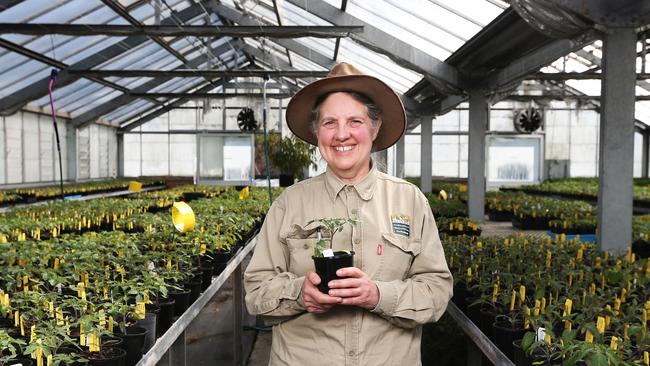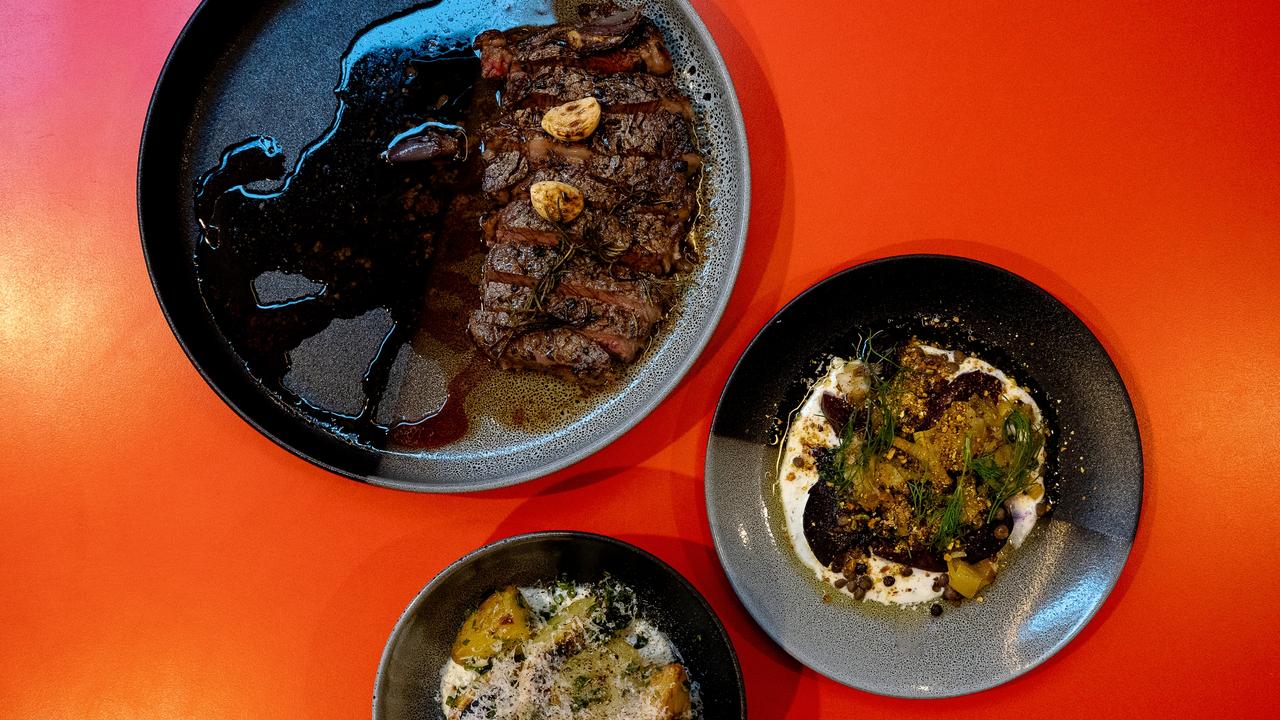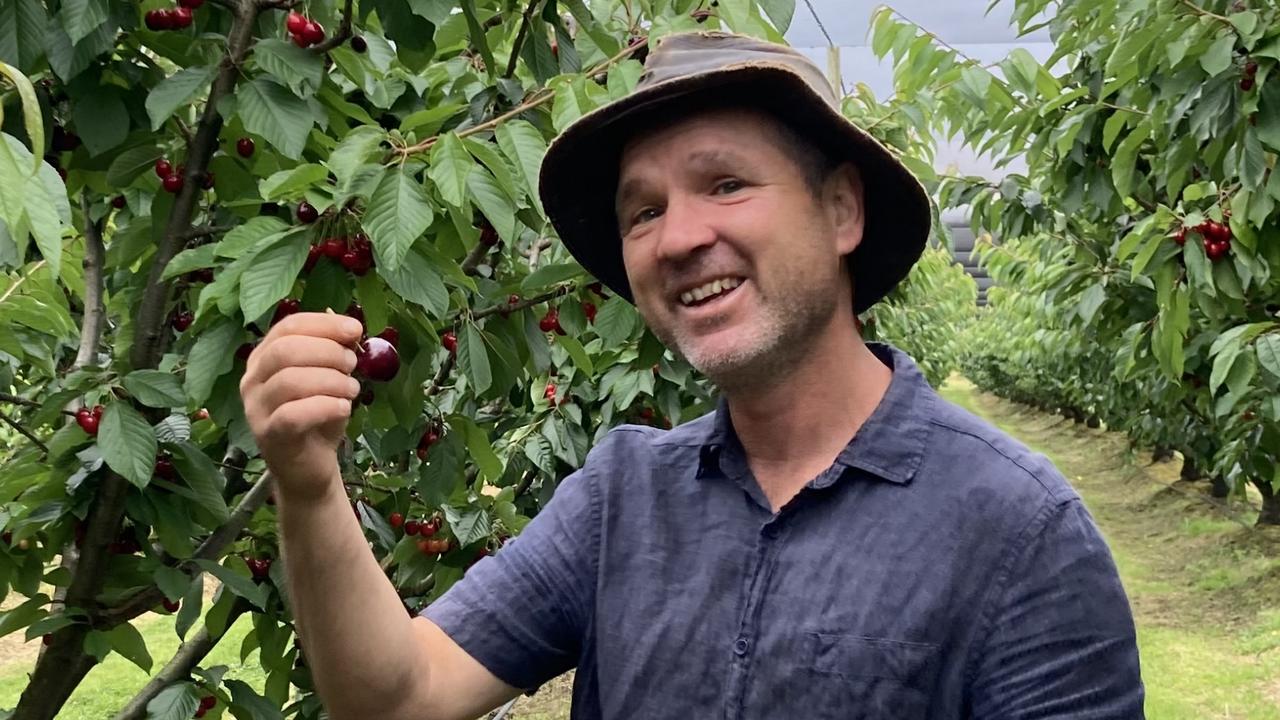Tasmanian tomato plants ripe for the picking
PLAN ahead to make the most of the tomato seedling sale at the Botanical Gardens, says ELAINE REEVES

Food and Wine
Don't miss out on the headlines from Food and Wine. Followed categories will be added to My News.
WHY tomatoes? Why not lettuces or sweet corn, I wonder while interviewing Margot White, the horticulturist behind the Royal Tasmanian Botanical Gardens’ huge tomato seedling sale.
“It excites people,” Margot says. “In Tasmania, it’s a sort of a challenge to grow tomatoes; on mainland not so much.”
The tomato sale began in a small way eight years ago, and has “picked up a nice momentum”. This week 7000 seedlings of 120 different varieties of tomato will go on sale, and are expected to raise about $40,000 for the gardens.
The queues are long. More people are finding it convenient to donate $10 and go to the prelude sale this Thursday than to line up on Saturday.
Each year, a team of garden volunteers begins getting ready for the sale in mid-July, when the seeds are planted.
Margot says her volunteer team is heavy with librarians, who itch to impose some alphabetical order on the display of seedlings.
Margot says the planted seeds are placed out in alphabetical order, however it is too difficult to transfer that to the greenhouse.
For most of the year, the greenhouse is full of bromeliads and other warmth-loving plants. As plants are moved out, the first tomato seedlings to come to size are moved in, and this maturity ranking throws alphabetisation out the window.
However, this year, one of the volunteers has come up with a key to the display. For instance, Aunt Gerties Gold is at the southern end of the third aisle and Yellow Grosse Lisse is midway in aisle eight, and so on. With such information you can plan your route to find everything you want.
Margot says most people buy about 12 plants, and she advises buying early, mid and late-ripening varieties so you can have an extended season of tomatoes from before Christmas through until June.
You might also want to buy a variety of colours. It is possible, says Margot, to have a tomato salad with no red tomatoes in it — think green zebra, black cherry, lemon drop, pink delight, purple Russian.
The easiest tomatoes for Tasmania are the small, cherry varieties. They ripen quicker and do better in Tasmania. All the tomato seedlings for sale are chosen for their suitability to a cool climate and short growing season. They hail from such places as Switzerland, Russia, Ukraine and Czechoslovakia.
GET IN EARLY
This Thursday is the prelude sale from 11am to 4pm. Donate $10 and avoid the long queues. The main event is on Saturday from 10am to 3pm.
Be prepared: If you send an email to Margot.White@rtbg.tas.gov.au she will send you back a list of all 120 plants, their growth habit, colour, shape, size, where they come in the season, how long they take to grow and suggested uses. You will also receive an alphabetical list of where in the greenhouse the plants are.
Balcony buddies
Tomatoes were Indira Naidoo’s starting point when she began gardening on her 13th floor balcony. She knew growing her own was the only way to get the flavour of tomatoes she had bought from a farmers’ market.
In 2012 Indira released the book , The Edible Balcony (Lantern), and since then her passion for gardening has become the former newsreader’s profession.
She now hosts garden tours of New York rooftops and, next year, Europe (see her blog Saucy Onion), and her second book, The Edible City (Penguin Random House, $45), has just been published.
This time Naidoo tells the stories of five gardens. There is the Mount Carmel School bush-tucker garden in Sydney, the community gardens at Turramurra in Sydney and Fitzroy in Melbourne and two rooftop gardens — for the Mesa Verde Restaurant in Melbourne and the Wayside Chapel at Kings Cross in Sydney.
Indira also offers gardening tips from worm farms to starting community gardens as well as delicious recipes.


